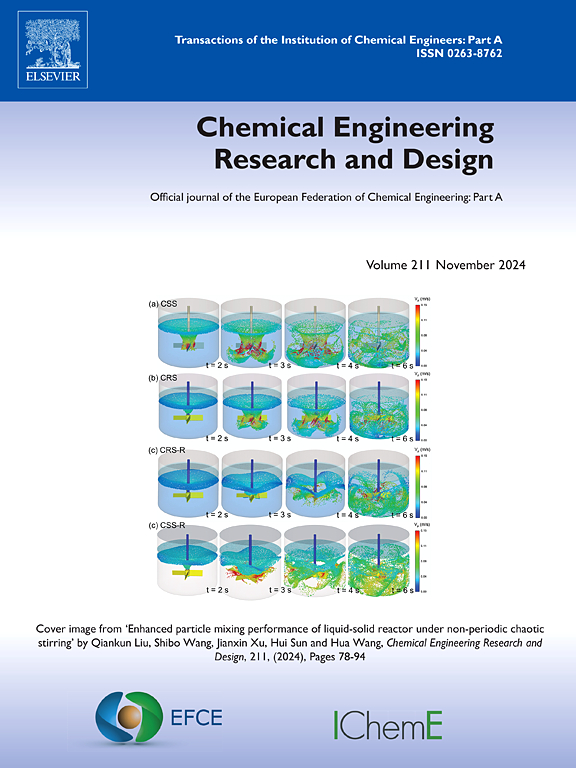解决欧洲在废水处理中对可持续活性炭的新需求:使用不同的活化策略,用残留的木质吸附剂去除微污染物
IF 3.7
3区 工程技术
Q2 ENGINEERING, CHEMICAL
引用次数: 0
摘要
为了满足重新制定的欧盟城市污水处理指令,欧盟和奥地利将需要大约。270和10 kt a−1的活性炭。本研究通过实验吸附数据,探索了使用从剩余木质生物质中提取的非化石活性炭来满足这一需求的潜力。我们比较了一种商用活性炭(COM-AC)和三种使用不同活化策略的当地残余木材生产的活性炭(锌- ac, G-AC, CO2-AC)。以废木材为原料,用氯化锌一步化学浸渍法制备了ac锌。G-AC是林业残渣生物质气化的副产物,CO2-AC是G-AC的co2活化版本。研究了六种微污染物在不同水基质中的吸附实验。zn - ac具有最大的表面积(SBET 1946 m2 g−1)和第二高的自来水微污染物容量(257.4 mg g−1),仅次于COM-AC(297.6 mg g−1)。锌- ac在废水中的容量保持稳定。g -ac表现出较低的容量(34.6 mg g−1),通过co2活化可将其提高到105.1 mg g−1。主要的去除机制是疏水和π相互作用。研究表明,尽管产量(35% % vs.最有希望的方法为3.5% %)和质量将是评估欧洲木质生物质活性炭生产潜力的关键,但这些来自残木的活性炭可能是废水处理的可行替代方案。本文章由计算机程序翻译,如有差异,请以英文原文为准。
Addressing Europe’s new hunger for sustainable activated carbon in wastewater treatment: Micropollutant removal with residual wood-based adsorbents using different activation strategies
To meet the recast EU Urban Wastewater Treatment Directive, the EU and Austria will require approx. 270 and 10 kt a−1 of activated carbon, respectively. This study explores the potential of using non-fossil activated carbon derived from residual woody biomass to fulfil this demand using experimental adsorption data. We compared a commercial activated carbon (COM-AC) with three activated carbons produced from local residual wood (ZINC-AC, G-AC, CO2-AC) using various activation strategies. ZINC-AC was produced through one-step chemical impregnation with ZnCl2 of waste wood. G-AC was a by-product of gasifying forestry residue biomass, and CO2-AC is the CO2-activated version of G-AC. Adsorption experiments were performed with a mix of six micropollutants in different water matrices. ZINC-AC exhibited the highest surface area (SBET 1946 m2 g−1) and the second highest micropollutant capacity in tap water (257.4 mg g−1), after COM-AC (297.6 mg g−1). ZINC-AC's capacity remained stable in wastewater. G-AC showed a low capacity (34.6 mg g−1), which could be increased to 105.1 mg g−1 by CO2-activation. The predominant removal mechanisms are identified as hydrophobic and π-interactions. The study suggests that these activated carbons from residual woods could be a viable alternative for wastewater treatment, though production yield (35 % vs. 3.5 % for the most promising methods) and quality will be crucial for assessing Europe’s activated carbon production potential from woody biomasses.
求助全文
通过发布文献求助,成功后即可免费获取论文全文。
去求助
来源期刊

Chemical Engineering Research & Design
工程技术-工程:化工
CiteScore
6.10
自引率
7.70%
发文量
623
审稿时长
42 days
期刊介绍:
ChERD aims to be the principal international journal for publication of high quality, original papers in chemical engineering.
Papers showing how research results can be used in chemical engineering design, and accounts of experimental or theoretical research work bringing new perspectives to established principles, highlighting unsolved problems or indicating directions for future research, are particularly welcome. Contributions that deal with new developments in plant or processes and that can be given quantitative expression are encouraged. The journal is especially interested in papers that extend the boundaries of traditional chemical engineering.
 求助内容:
求助内容: 应助结果提醒方式:
应助结果提醒方式:


